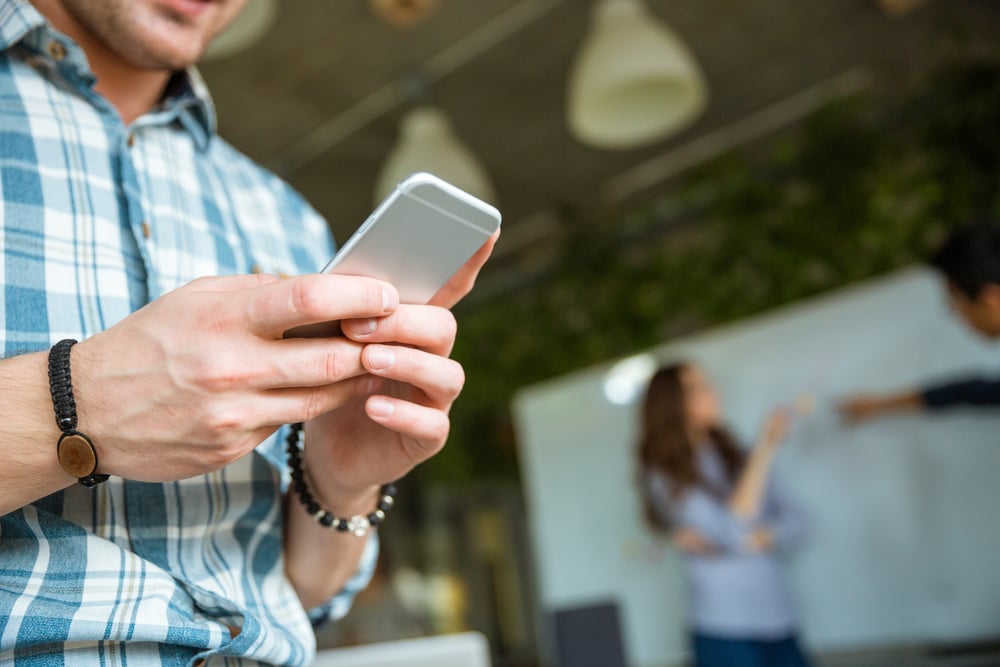Top 6 Virtual Try-On Examples Which Enhance Personal Shopping Experience

According to Snap's Global Product Marketing Lead,businesses lose up to $550 billion annually to customers returning items, and 70% of customers find it difficult to get clothes that fit. Mckinsey discovered that poor fit or style accounts for 70% of returned fashion items.
On the other hand, offline shoppers can try on items before buying, resulting in higher confidence in their purchases. Thanks to augmented reality (AR) and machine learning (ML) technologies, it is now possible for online shoppers to check how clothes fit through virtual try-on experiences.
id=
Virtual try-on technologyallows customers to virtually try on clothes, makeup, and other products before they buy them. This innovative approach includes options to virtually try on clothes, experiment with virtual makeup, and even test out virtual sunglasses. The technology replicates the in-store fitting experience using augmented reality and machine learning or AI.
By virtually previewing products, shoppers gain a clearer understanding of their appearance, which helps them make more informed decisions and reduce potential regrets. Additionally, this interactive approach makes shopping more enjoyable, leading to the discovery of new products that may have otherwise gone unnoticed.
id=
-
Improved customer satisfaction: By enabling customers to visualize how items will appear on them, virtual try-ons help build confidence. This assurance in their purchasing decisions contributes to a more satisfying shopping experience.
-
Reduced return rates: Shoppers can now see how a product would look on them without physically trying it on, making it easier to select the right size, color, and style. This, in turn, helps to make more informed purchasing decisions, reducing the likelihood of returns.
-
Increased sales and conversions: As customers feel reassured about their choices, they are more likely to complete transactions, ultimately boosting a business's growth.
- Enhanced brand loyalty: By providing personalized, interactive product exploration, businesses differentiate themselves from competitors and establish strong customer connections.
-
Sustainable and cost-effective: By reducing return rates and encouraging conscious consumer behavior, virtual try-ons help retailers to reduce operational costs.
id=
1. Warby Parker: Warby Parker is a pioneer in using virtual try-on for eyewear, where customers can use the Warby Parker app to virtually try on different frames before buying. The website allows checking five frames and includes free return shipping. The app uses computer vision to analyze face shape and skin tone to create a personalized fit recommendation. This virtual glasses try-on experience extends to sunglasses as well, offering a comprehensive virtual sunglasses try-on option.
.jpeg?width=418&height=506&name=Warby%20Parker%20(1).jpeg)
that allows customers to experiment with different makeup products virtually. Users can do a complete virtual makeover using various products and share them with friends. The app uses facial recognition technology to analyze face shape and skin tone to create a personalized makeup look. It offers features like virtual lipstick try-on, foundation try on, and even acts as a virtual makeup artist, providing a complete virtual beauty studio experience.
.png?width=1162&height=824&name=Zrzut%20ekranu%202023-05-26%20o%2012.58.41%20(1).png)
3. Nike Fit: Nike Fit was embedded in the Nike App and used augmented reality (AR) and artificial intelligence (AI) to provide the perfect shoe sizes for users by scanning their feet. Nike has since discontinued the Nike Fit experience.
4. Zalando: They introduced a virtual fitting room for customers. It uses machine learning, computer vision, and other tools to predict the perfect size for their customers. They’re still perfecting their virtual fitting room and are launching campaigns to gauge user response and adoption. So far, over 30,000 customers have tried it. According to their Vice President of Size and Fit, “Our goal with these pilot campaigns is to learn and understand how customers engage with this new technology so we can develop a seamless, scalable solution for the future. We can already see that customer engagement with these campaigns increases and, in fact, around half of the customers try more than one size on the avatar...”
.png?width=1243&height=854&name=Zrzut%20ekranu%202023-05-26%20o%2012.58.26%20(1).png)
.jpeg?width=1242&height=722&name=Prada%20(1).jpeg)
.jpeg?width=1219&height=721&name=Cosmo%20(1).jpeg)
Bonus example
Virtual Dressing Room Concept by Netguru:
Netguru presents a virtual dressing room concept for online stores, which allows users to preview their look before purchasing. The solution uses AI to allow customers to customize clothes on specific body types. There are more features like mix-and-match recommendations, uploading their own photo, adding complete stylings to their cart, and sharing their looks on social media. The benefits of implementing this virtual dressing room include reduced returns, improved conversion rates, increased sales volume, and enhanced brand reach.
id=
id=
Virtual try-on technology seeks to revolutionize the online shopping experience by addressing the challenges of poor fit and uncertainty. It improves customer satisfaction, reduces return rates, increases sales and conversions, enhances brand loyalty, and more. With the implementation of virtual try-on in industries like eyewear, makeup, fashion, and accessories, retailers are already reaping the benefits. F
rom virtual makeovers to virtual clothing try on experiences, this technology is transforming how consumers interact with products online. As virtual beauty studios and virtual makeup artists become more sophisticated, they will offer increasingly personalized and accurate recommendations.
In the near future, virtual try-on will become an indispensable tool for businesses and a source of confidence and convenience for customers, making online shopping as immersive and reliable as in-store experiences.






